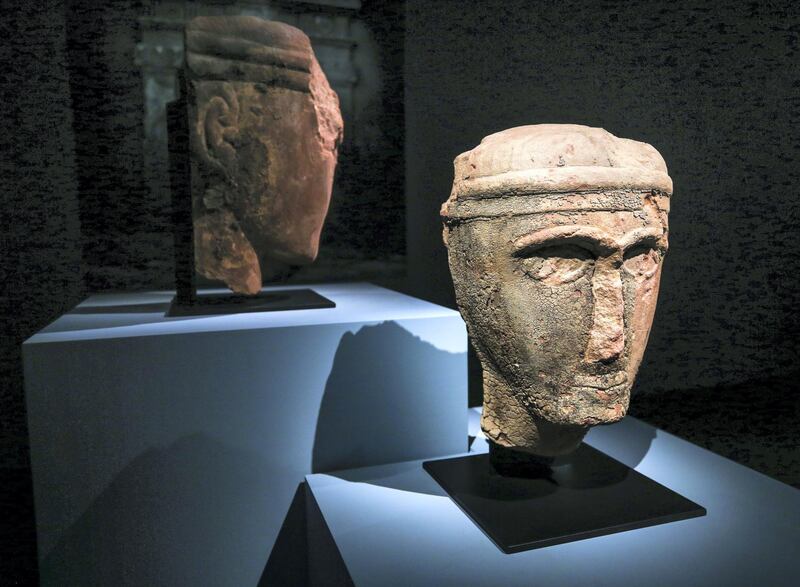When Louvre Abu Dhabi opened exactly a year ago, it urged visitors to “see humanity in a new light”. It is apt, then, that the newly opened Roads of Arabia exhibition marking its first birthday offers a vivid material and visual depiction of the ancient people and forgotten cities that once filled this region.
Those routes winding through Arabia were reinvigorated and reconfigured following the rise of Islam in the seventh century AD, which transformed Madinah into the capital of a pan-Arabian superstate.
Even as the roads of Arabia carried the armies of Islam to the threshold of world conquest and new metropolitan centres were established in Syria and Iraq, Madinah overflowed with palaces of the Arab aristocracy.
It was in Madinah that Sukayna bint Al Hussein, the great-granddaughter of the Prophet Mohammed, established a literary salon and hosted the greatest poets and musicians of the age. Her patronage was important to the cultural flourishing of the Umayyads, the first dynasty of Islam.
Her legacy provided inspiration for Al Nahda Al Arabiya, or the Arab renaissance, in the late 19th and early 20th centuries, when the intellectuals of Egypt, Syria and Iraq sought to revive the fortunes of the Arab world.
In the galleries of Louvre Abu Dhabi, something of this high point of Arab civilisation can be glimpsed in the beautiful carved tombstones from the historic cemetery of Al Mala near Makkah, which are artfully displayed in the exhibition.
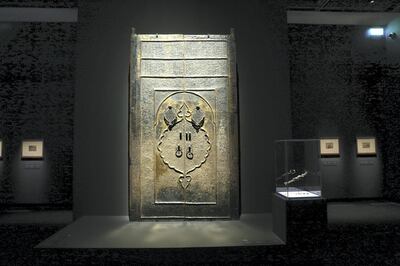
Broadly contemporary with this are the finds from the site of Al Rabadha, about 200 kilometres north-east of Madinah, including a collection of high-quality glazed ceramics from Abbasid Iraq.
These ceramics are found as far away as Spain and even Japan, testifying to the tremendous expansion of the roads of Arabia during the golden age of Islam.
The raison d’etre of Al Rabadha was a stopover on the way to pay pilgrimage in Makkah. It lay on the Darb Zubayda, a road system linking Iraq to the Hejaz, western Saudi Arabia, built by the Abbasid princess Zubayda bint Jafar.
Centuries later, a Spanish Muslim traveller wrote of this road: “These tanks, pools, wells and stations on the road from Baghdad to Makkah are monuments to Zubayda...who applied herself to this throughout her life, leaving on this road facilities and useful works, which from her death until today have been of service to all who every year go on an embassy to God most high. But for her generous acts in this direction, this road could not have been traversed.”
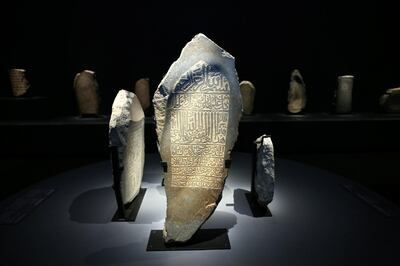
The oldest of the roads of Arabia reached from the shores of the Mediterranean to the mountains of Yemen. It was along these roads that the Queen of Sheba, then a Yemeni kingdom, brought King Solomon incense in such quantities as had never been seen before.
According to the Roman writer Pliny the Elder, it was a journey of more than four million steps passing through the lands of no less than 28 Arabian communities and cities.
The artefacts on show at Louvre Abu Dhabi bring drama to the long-lost world of Pliny in a bewildering sequence of golden cheeks, bronze lips and stony brows, stage-lit in darkened galleries.
Most of the objects come from the Greek and Roman era, when the incense trade was at its peak but stretch back as far as the Bronze Age, then scroll forward through the Islamic centuries, when other roads of Arabia flourished. There is a feeling of travelling through space as well as time.
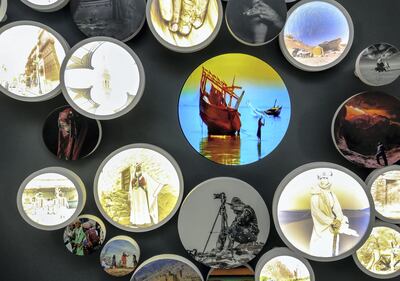
If you followed the trail of the incense caravans, you would find yourself at Qaryat Al Faw in Saudi Arabia, the capital of Kindah, one of three great tribal kingdoms of pre-Islamic Arabia.
The lavishness of the court is evident in the frescoed face of a man peering out from vine tendrils laden with bunches of grapes, part of a palace banqueting scene in which Arab kings reclined on Greek couches.
Nearby, a bronze statuette of Heracles Bibax – “the drinker” – once held a drinking vessel in his right hand, surrounded by gorgeous “thousand-flower” glass vessels imported from Alexandria.
These objects evoke the court of a famous Arab king, Jabala Al Ghassani, who ruled in north-western Arabia and Syria-Palestine.
The poet Hassan Al Khazraji once wrote that he had “seen 10 singing girls, five of them Byzantines, singing Greek songs to the music of lutes, and five from Hira chanting Babylonian melodies. Arab singers used to come from Makkah and elsewhere for Jabala’s delight…he sat on a couch of myrtle and jasmine and all sorts of sweet-smelling flowers, surrounded by gold and silver vessels full of ambergris and musk.”
From Qaryat Al Faw, the road split. One branch ran north-east to Thaj, or ancient Gerrha, taking the incense of Yemen to Mesopotamia and Persia.
It is from the archaeological site of Thaj that one of the most remarkable finds in the exhibition was found. In an undisturbed tomb, the body of a six-year-old princess was found wrapped in sheet gold.
Having first seen the photograph of her golden death mask in the billboard posters used to advertise the exhibition, up close in real life it is tiny, so that its reduced scale becomes imbued with the poignant fragility of infant life.
Thaj is contemporary with, and linked to, the archaeological sites of Al Dur, Dibba and Mleiha in the UAE.
The exhibition displays two stone eagles which once stood guard at a 2,000-year-old temple in Al Dur.
At Mleiha, the regional capital, coins based on those of Alexander the Great were minted.
Most intriguing of all, the names they bear are those of women. Whether priestesses or queens, both are found in the annals of Arabian history.
The other route from Qaryat Al Faw passed north to the Mediterranean along the Hejaz. This north-western region was dominated by the Lihyanites, whose thick brows and lumbering physiques provide much of the monumentality of the present exhibition.
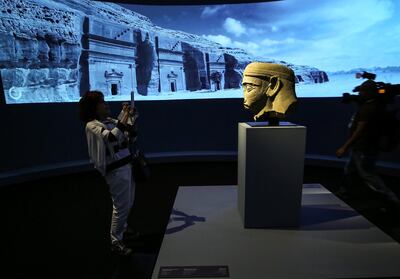
Around this time, the fifth century BC, the Greek historian Herodotus noted that the Arabs recognised Aphrodite, the Greek goddess of love, who featured prominently in tens of thousands of inscriptions cut into rock faces 2,000 years ago.
The great days of the incense trade ended with the spread of Christianity, which was adopted as the official religion of the Roman empire in the fourth century AD. The temples of the gods were pulled down and incense was no longer burned on their altars.
The two millennia which separate the Queen of Sheba from Zubayda bint Jafar witnessed the shift from incense to Islam.
Not only did the world around Arabia change but Arabia changed the world around it.
The Roads of Arabia exhibition goes some way to exploring that complex and still evolving relationship and offers us just a glimpse of the fascinating journey leading from some of the earliest humans to inhabit the peninsula, to modern times.
Dr Timothy Power is an archaeologist and historian focusing on Arabia and the Islamic world and an associate professor at Zayed University in Abu Dhabi. His book, A History of the Emirati People, is due to be published in 2020
See our Weekend supplement for a review and pictures of the exhibition
